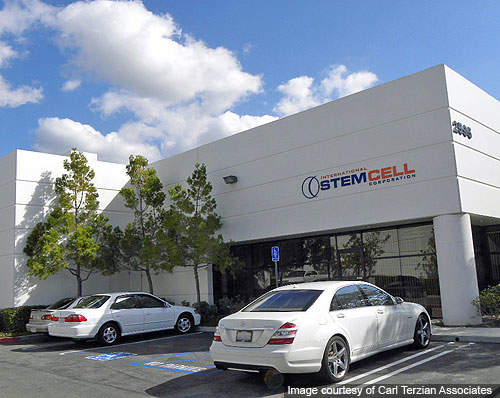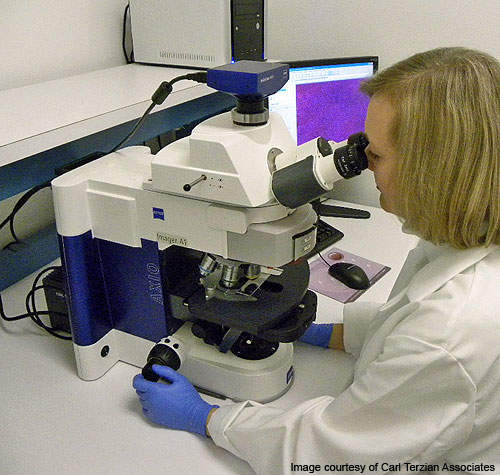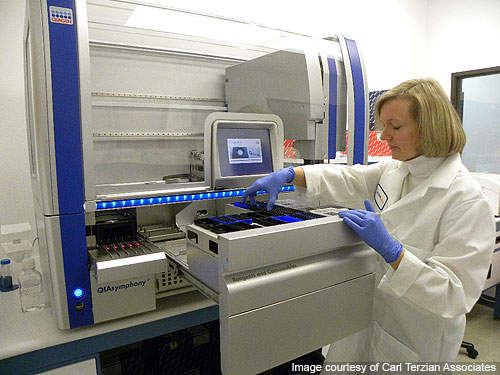The International Stem Cell Corporation (ISCO) launched its new Oceanside stem cell manufacturing facility in February 2010. Situated in California, US, the new facility is located close to fertility clinics that provide donated human eggs to ISCO. The facility is also near leading Californian research institutions that have already collaborated with ISCO on basic stem cell biology and therapeutic applications. The facility cleared the final building inspection during the first week of February 2010.
The new facility will manufacture clinical-grade human parthenogenic stem cell products; a new class of stem cells pioneered by ISCO. The latter has developed ten hPSC lines, including both HLA heterozygous and homozygous lines.
ISCO will simultaneously partner with leading scientists across the world to showcase the therapeutic applicability and the potential advantages of hPSC over other stem cells.
ISCO facility enhancements
The facility accommodates separate suites for developing and manufacturing different types of cells. During 2010, the facility will adhere to current good manufacturing practice (cGMP) standards. It will also be implemented with ISCO’s parthenogenic stem cell processes.
stem cell manufacturing facility in February 2010.”
Parthenogenic stem cells
The stem cell facility will produce human parthenogenic stem cells (hpSCs) that are derived from parthenogenetically induced human oocytes. Similar to embryonic stem cells (ESCs), hpSCs are pluripotent cells that can be reproduced into any type of cell within the human body without using or destroying the viable human embryos.
Unlike induced pluripotent stem cells (iPSs), hPSCs do not manipulate the gene expression process back to a less differentiated stage, thereby avoiding the regulatory, ethical and safety obstacles. Unlike ESCs and iPSs, hpSCs can be produced in an identical form that allows each line to be immunologically compatible with millions of patients across the world. This avoids the key immune rejection issues associated with other stem cell classes.
The hpSC cell line will be used to treat a host of degenerative diseases. This includes liver disease, diabetes, age-related Macular Degeneration (AMD), corneal blindness and various neural degenerative diseases that are common among genetically different populations across the globe.
Human parthenogenic stem cell (hpSC) technology
The facility will produce different cell types using the company’s patented human parthenogenic stem cell (hpSC) technology, known as parthenogenesis. This is a special kind of reproduction that does not require fertilisation. As the technology uses un-fertilised oocytes, it eradicates the ethical issues arising from the use of human embryos.
Unfertilised human eggs are used to produce parthenogenic stem cells (hpSC) that have the ability to be immune-matched with millions of patients. In the beginning, the human oocytes are parthenogenically activated using a range of activation techniques (including electrical or chemical stimuli).
This produces either heterozygous human parthenogenetic stem cell lines that can be precisely HLA-matched or stem cell lines histocompatible with the oocyte donors or HLA homozygous hPSC that are histocompatible with the major segments of human population.
Parthenogenetic activation of metaphase II (MII) oocytes along with a mix of activating agents including ionomycin and 6-dimethylaminopurine (6-DMAP), stops the protrusion of the second polar body thereby allowing the activated oocytes to retain their entire genetic material.
The HLA genotypes of stem cells obtained from such oocytes are heterozygous and are genetically cloned to the donors. However, when combined with activating agents ionomycin and puromycin, parthenogenetic activation of MII oocytes allows the second polar body to extrude. During this process, the activated oocyte only partially includes the metaphase II chromosomes. Such activated oocytes, however, result in the development of diploid stem cells that have homozygous HLA genotypes and include a cloned half of the set of alleles obtained from the oocyte donor.
Once the oocytes are activated they can be formulated into parthenogenetic embryos that can reach the stage of blastocyst. The inner cell mass of such a parthenogenetic blastocyst leads to the development of a parthenogenetic stem cell line.







